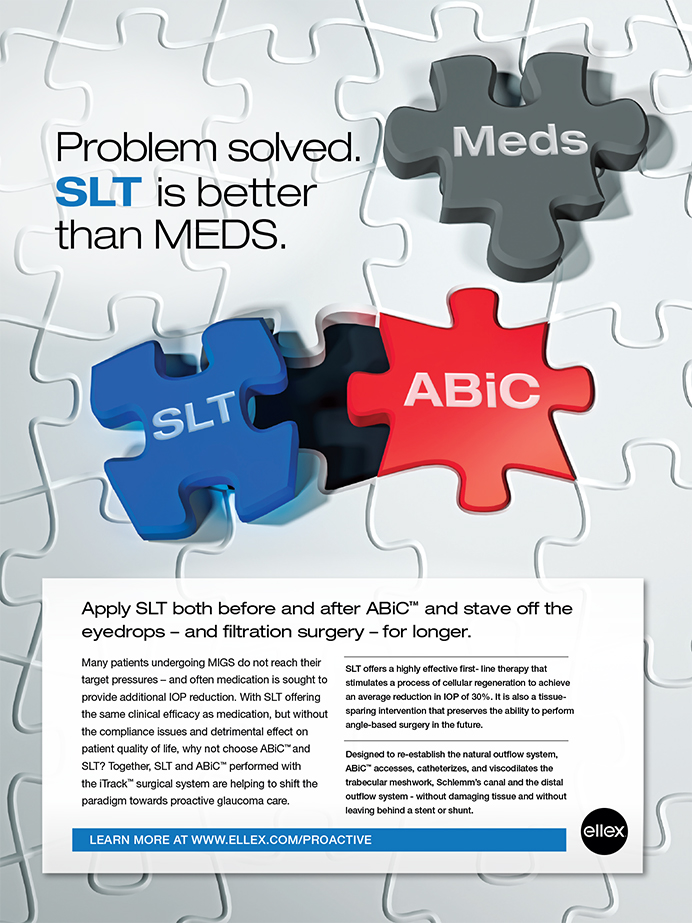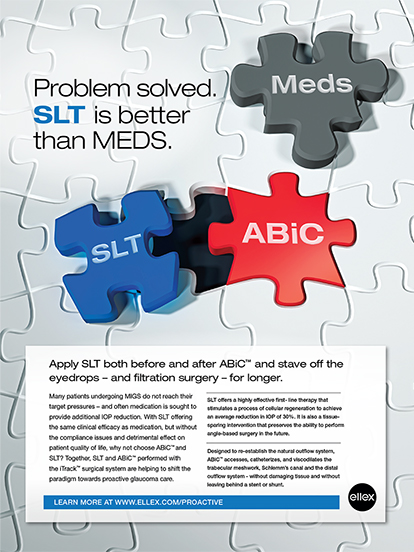Glaucoma is an area of eye care seeing major innovations, and clinicians are curious about how changes in microinvasive glaucoma surgery and pharmacology will enable them to offer more options to their patients. Nutrition may also play an important role in glaucoma, and some researchers have turned their focus to understanding the interactions between nutritional supplementation and glaucoma.
BACKGROUND
Glaucoma is a multifactorial condition where loss of retinal ganglion cells leads to characteristic cupping of the optic nerve with corresponding visual field defects. IOP is the only modifiable risk factor, and lowering IOP remains the only proven method to prevent the development of or slow the progression of glaucomatous optic neuropathy.
It has been noted across several large glaucoma treatment trials that some patients still experience glaucomatous progression despite achieving the targeted decrease in IOP. The cause of glaucoma and its progression is likely multifactorial, and abnormalities in ocular perfusion have been found to be a contributing factor. Vascular risk factors suggest that abnormal or insufficient blood flow to the optic nerve may be involved in glaucoma pathogenesis.
There is significant interest in the eye care community to develop therapeutic options that go beyond addressing IOP. The effects of dietary factors and antioxidant supplementation have been evaluated across a range of studies with mixed results. To date, most clinical studies have been observational in nature and have focused on normal-tension glaucoma in healthy patients. Furthermore, as demonstrated by a variety of diagnostic modalities, patients with open angle glaucoma (OAG) have significantly decreased blood flow correlating with glaucoma severity.
STUDY DESIGN
Recently, Harris et al measured the effect of antioxidant supplementation on ocular blood flow in patients with OAG.1 In a randomized, double-blind, placebo-controlled crossover study, they investigated the effect of 1 month of antioxidant dietary supplementation (Optic Nerve Formula, ScienceBased Health) on retinal and retrobulbar blood flow in OAG patients. Researchers enrolled 45 patients with OAG; 42 patients completed the study. IOP, ocular perfusion pressure, retrobulbar blood flow, and retinal capillary blood flow were noninvasively measured at baseline and 1 month after antioxidant and placebo administration.
STUDY FINDINGS
Patients in the treatment arm demonstrated a statistically significant increase in mean peak systolic and/or end diastolic blood flow velocities in all retrobulbar blood vessels compared with patients in the placebo arm. Vascular resistance was also reduced in central retinal and nasal short posterior ciliary arteries in the treatment arm. Notably, no significant changes were observed in mean IOP or ocular perfusion pressure in patients in the antioxidant supplementation arm.
LIMITATIONS
The investigators should be applauded for the study design. Still, two limitations ought to be highlighted.
First, OAG patients in the study were not descriptively characterized by glaucoma types. Patients with OAG are variably influenced by vascular risk factors. As such, it is difficult to draw general conclusions from these results. Most notably, normal-tension glaucoma, a type of OAG, has the most plausible relationship with vascular perfusion pathogenesis.
Second, the authors could have opted for statistical models that were appropriate for comparing 23 different measurement parameters for changes between treatment and placebo groups in 42 subjects.
CLINICAL IMPLICATIONS
The authors conclude that 1 month of administration of antioxidant supplementation in patients with OAG produced increased biomarkers of ocular blood flow within the retinal and retrobulbar vascular beds compared with placebo.
These findings suggest that antioxidant supplementation with this formulation for at least 1 month may improve retinal capillary perfusion in patients with OAG. Further research is necessary to determine if these measured changes clinically significantly affect the pathophysiology of glaucoma. This remains a challenge because glaucoma is a multifactorial optic neuropathy that progresses slowly but relentlessly. In the future, measuring ocular blood flow with OCT angiography may reveal additional positive effects of antioxidant supplementation in glaucoma patients.
- Harris A, Gross J, Moore N, et al. The effects of antioxidants on ocular blood flow in patients with glaucoma. Acta Ophthalmol. 2018;96(2):e237-e241.






